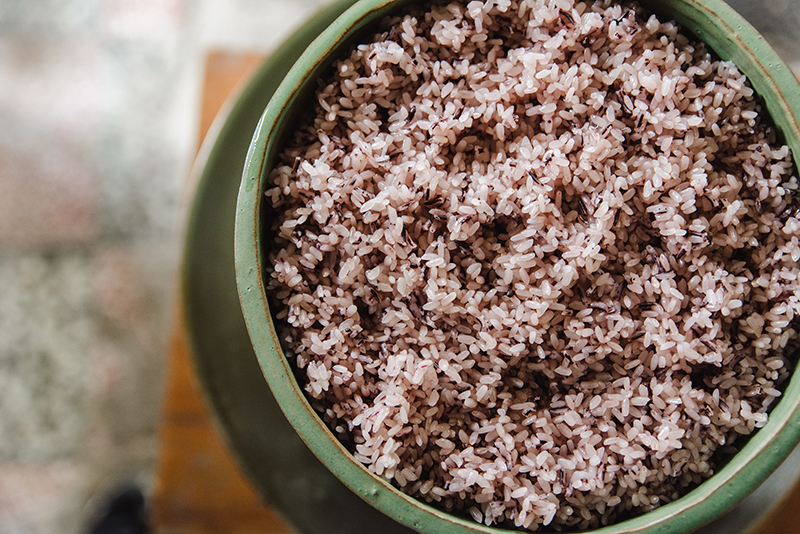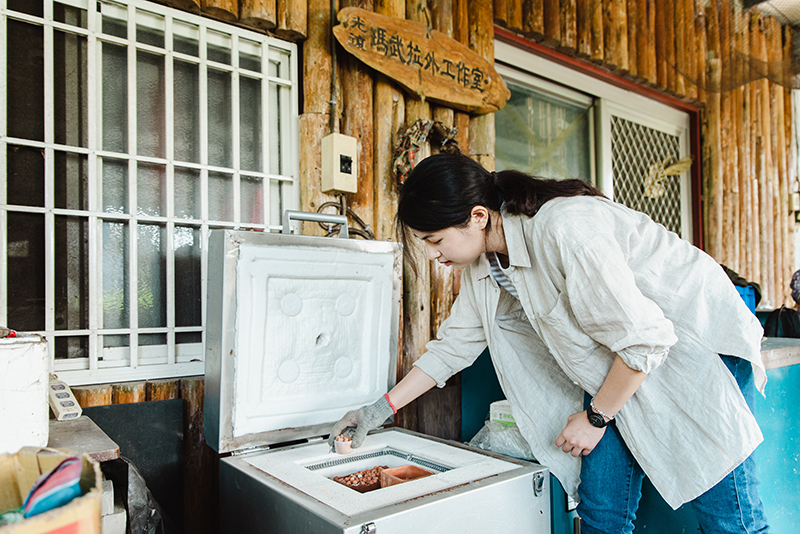
On the third day, we can finally open that kiln! After cooling for almost 40 hours, the electric kiln is still rather hot, and you need gloves to not get burnt. The first things we see upon opening the kiln were the boxes of pink-orange ceramic beads. Removing the layers, we are pleasantly surprised. Despite being fired in the same kiln, each piece comes out a little different in coloring. Foday shares that for larger pieces, even different parts on the same piece would have different coloring, which cannot be controlled. Such is the surprise and joy of kiln firing.
Afo’ also reminds us to remain happy when opening the kiln, thanking the ancestors in our hearts for blessing the pieces.
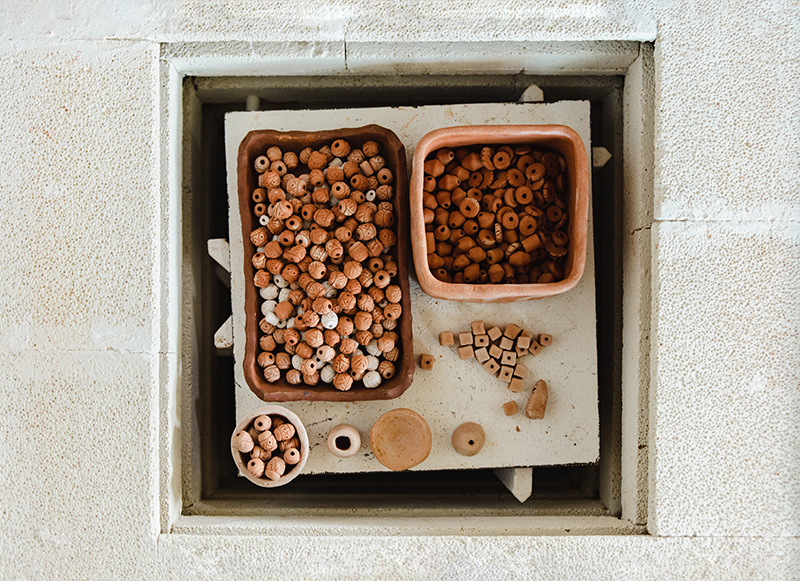

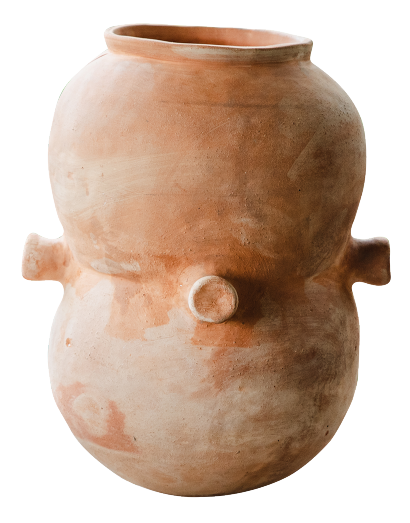

Due to size, larger potteries including the ritual cup and clay pot need to sit for many days for the moisture to evaporate before firing, otherwise, they may easily crack in the kiln. Therefore, only the small ceramic beads made on the first day made their way into the kiln. The large piece in this photo is an old piece by Afo’ and Foday.
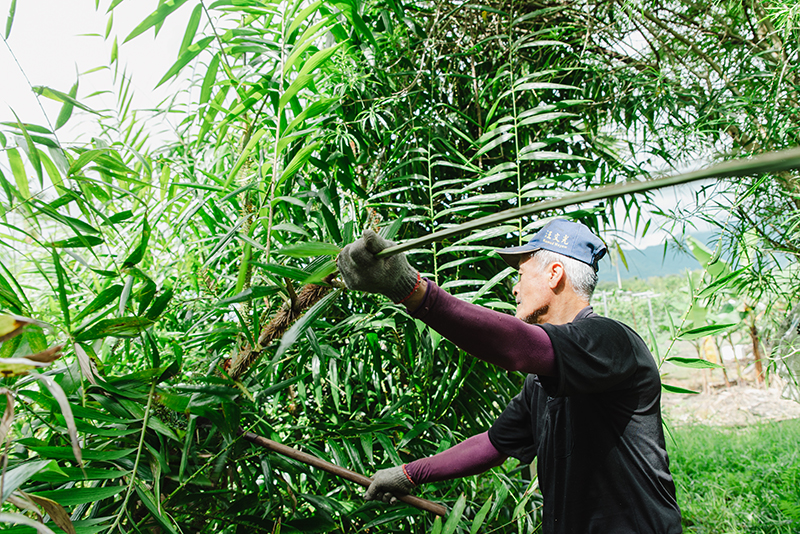
Kimsoy cutting down the Yellow Rotang Palm.
The whole troop arrives at the field of Afo’ and Kimsoy, where various types of wild vegetables consumed by the Pangcah can be found. Even though their main purpose is to gather Yellow Rotang Palm, Afo’ has already picked quite a bunch of wild vegetables along the way, including Black Nightshade which works wonders for a hangover as well as being a delicious side in instant noodles. “Elephant grass core can help quench the thirst in the mountains, it can also be sauteed or made into a cold dish,” Afo’ adds.
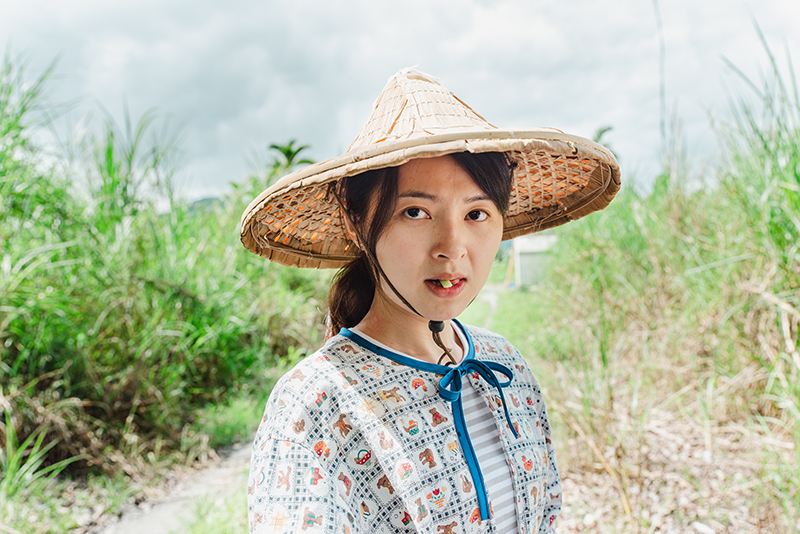
The look on hewen's face after eating the elephant grass core.
A little further down, we see a whole row of Yellow Rotang Palm in front of us. Yellow Rotang Palm is a kind of wild vegetable the Pangcah male learns to gather at a young age. You can tell whether a boy knows how to use a knife when collecting Yellow Rotang Palm, and one can become a laughingstock if he doesn’t know how to gather the palm. Yellow Rotang Palm is also an important food in rituals, a high-quality dish that is served to the elderly and wise.
In the past, you go into the mountains to gather the palm, but with Afo’ and Kimsoy aging, they bought planting stocks to plant in their field so they can pick some whenever they want them. Kimsoy reminds us that this Palm is barbed and very prickly and must take extra care when peeling. For hewen who is gathering Yellow Rotang Palm for the first time, this proved to be a rather difficult task.
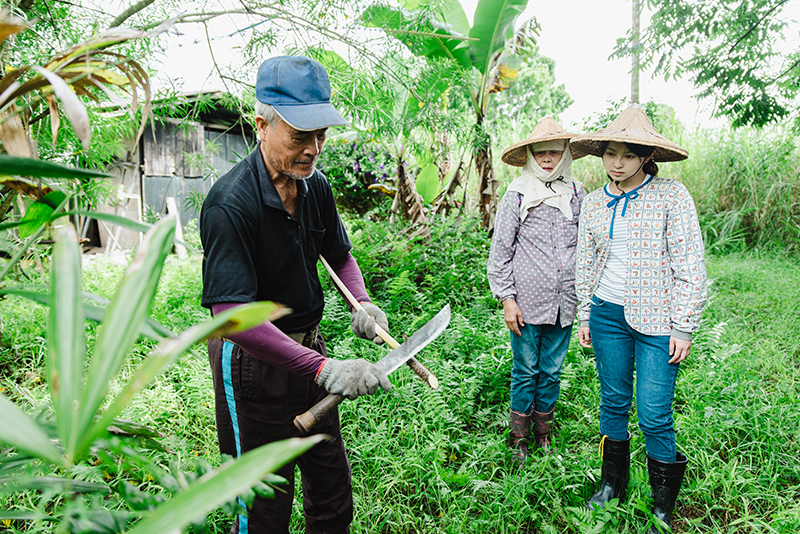
Kimsoy demonstrating how to peel the Yellow Rotang Palm.
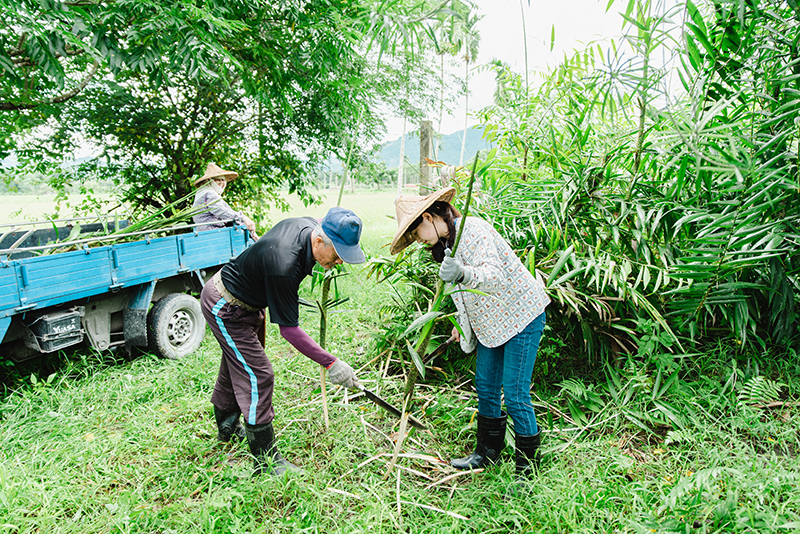

The thorns must be removed before bringing the Yellow Rotang Palm home.
The dongec (the rattan’s stem) must be processed immediately upon arriving home. The dongec can easily oxidize and turn dark with exposure to air, so with a pot of water ready, peel the palm skin by hand and cut the white dongec into pieces to soak. Afo’ shares that the Yellow Rotang Palm is a delicacy for the Pangcah. When children see her peeling the dongec, they get very excited, “wow! It’s going to be a feast tonight.”
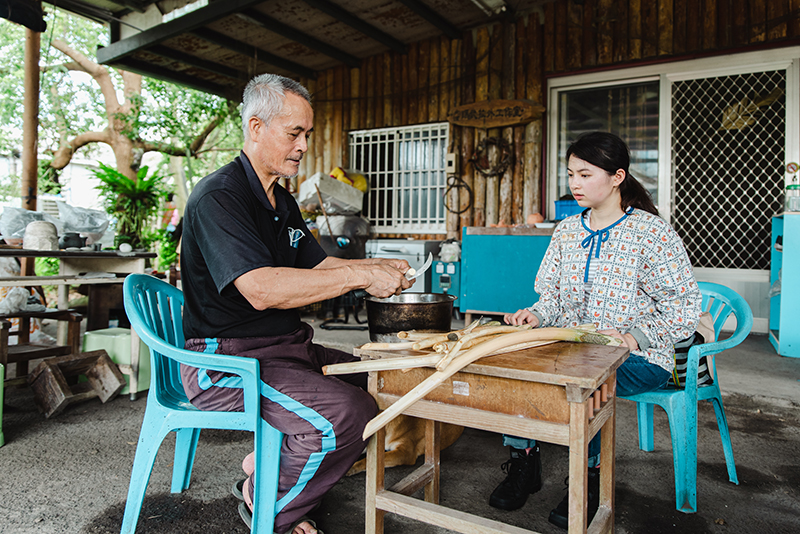
Kimsoy teaches hewen how to cut the dongec, it must be soaked in water immediately after.
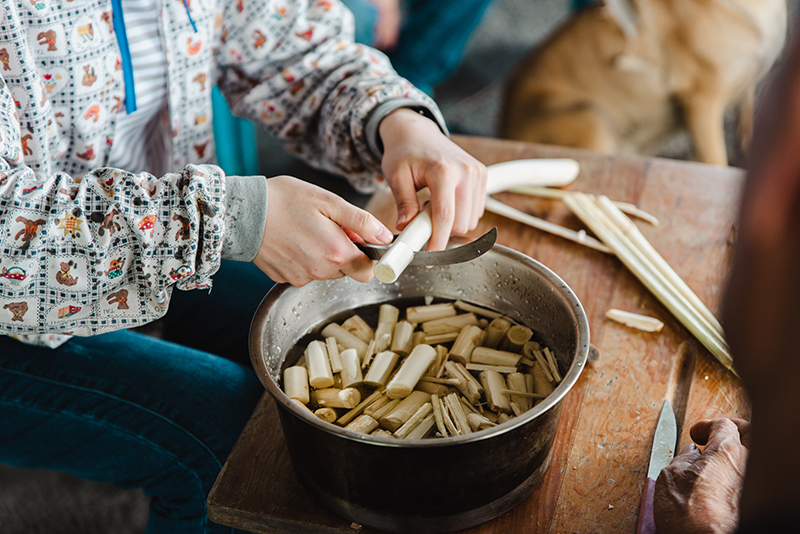
Afo’ takes out the Koreng and gets ready to steam some sticky rice. This Koreng is handmade by Afo’ and comes in the two parts of top and bottom. There is a clay slab with holes in between, and a handle on the two sides so it can be picked up easily. On the outside, It is covered with patterns for the “waves” and “mother’s love”, symbolizing the love Afo’ puts into preparing meals for her family.
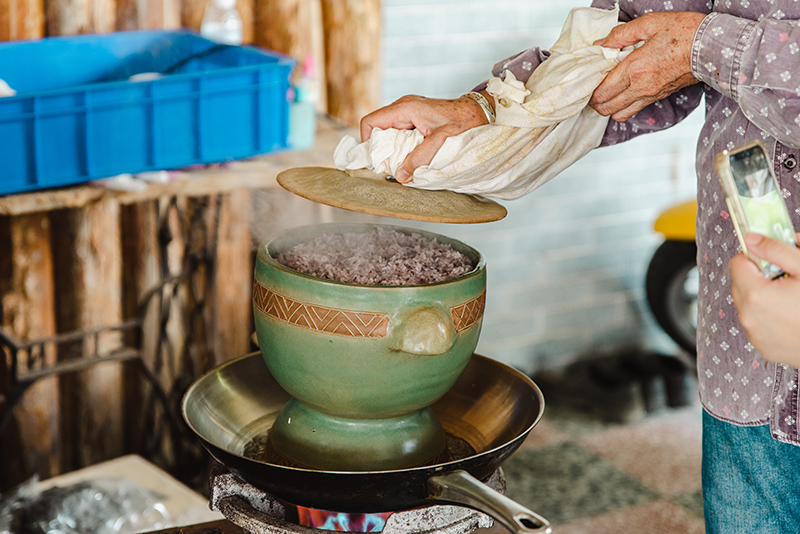
Koreng, Pangcah steam pot

For lunch today, we have dongec and spare rib soup, salted pork, and sticky rice, food infused with the Pangcah culture. Even though the purpose of this trip is to learn to make Pangcah Pottery, to end with food that is lovingly prepared by Afo’ and her family not only warmed our hearts but also really satisfied our appetites.
